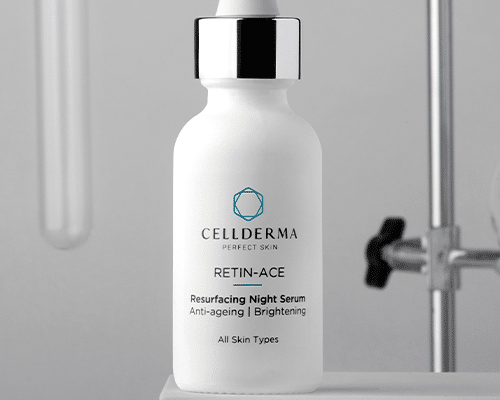Remember your ABCDEs – Skin Cancer Awareness
Topic: Skin health

In this article
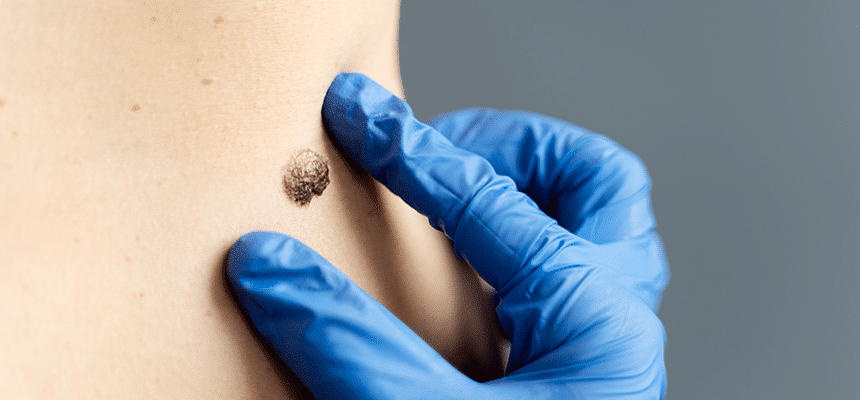
Introduction
Our skin can often change over time, especially when it comes to moles and skin lesions. Taking regular, cautionary checks is vital for the future of your skin health.
Keeping track of your skin over time can help you quickly identify irregular changes and seek the right advice and support. Using the ABCDE method will provide you with simple, consistent criteria to assess your skin. We recommend keeping notes and photos – this will give your GP more information should you ever need to see them. Always seek medical advice if you have concerns, or if you notice any of the following changes within your skin.
About ABCDE
ABCDE checks are a standardised skin assessment and can help GPs and skin practitioners easily identify suspicious skin lesions or moles. These checks can also be carried out at home with the help of a partner, friend, or family member. A hand mirror is also recommended.
Becoming familiar with your ABCDEs will help you get to know your skin and the changes that can occur over time.

A is for Asymmetry
Is your mole or skin lesion a non-uniformed shape? If so, this could be a warning sign.
Break it into quadrants (quarters) – do all 4 quarters look the same?

B is for Border
Cancerous moles can have an irregular border.

C is for Colour
More than one colour can also indicate melanoma.

D is for Diameter
A diameter larger than 6mm can be another indicator of a suspicious skin lesion.

E is for Evolution
Watch for changes, specifically, rapid changes. Rapid changes in a skin lesion are a sign of something irregular.
Important: Please Read
The images above have been selected as a visual aid. Moles can vary, and yours may look different to these examples. If you are worried about your moles or skin lesions, please book an appointment with your GP for an examination. It is better to be on the safe side.
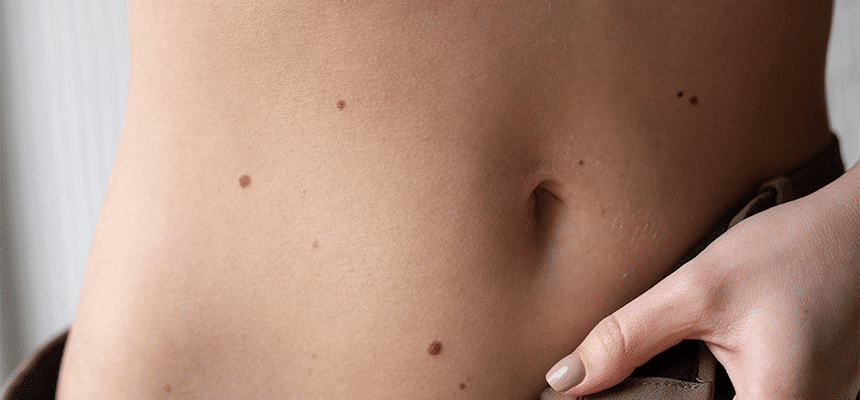
I Found Something. What Should I Do?
If you notice any of these signs, you must urgently seek medical advice. Skin cancer diagnoses are increasing yearly in the UK. But if caught early, there is a greater likelihood that it can be successfully treated.
It is wise to have your moles checked every 6 months to a year. If you have been diagnosed with melanoma or other skin cancer in the past, your doctor will ask you to come in frequently for mole mapping and skin checks. Mole mapping is a reliable, digital form of skin monitoring and minor changes can be closely monitored by medical professionals.
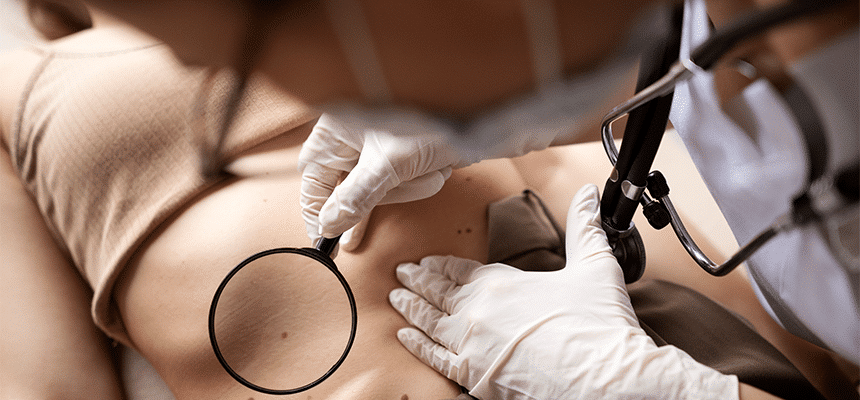
Types of Skin Cancer
There are three major types of skin cancer: Basal Cell Carcinoma, Squamous Cell Carcinoma, and Melanoma.
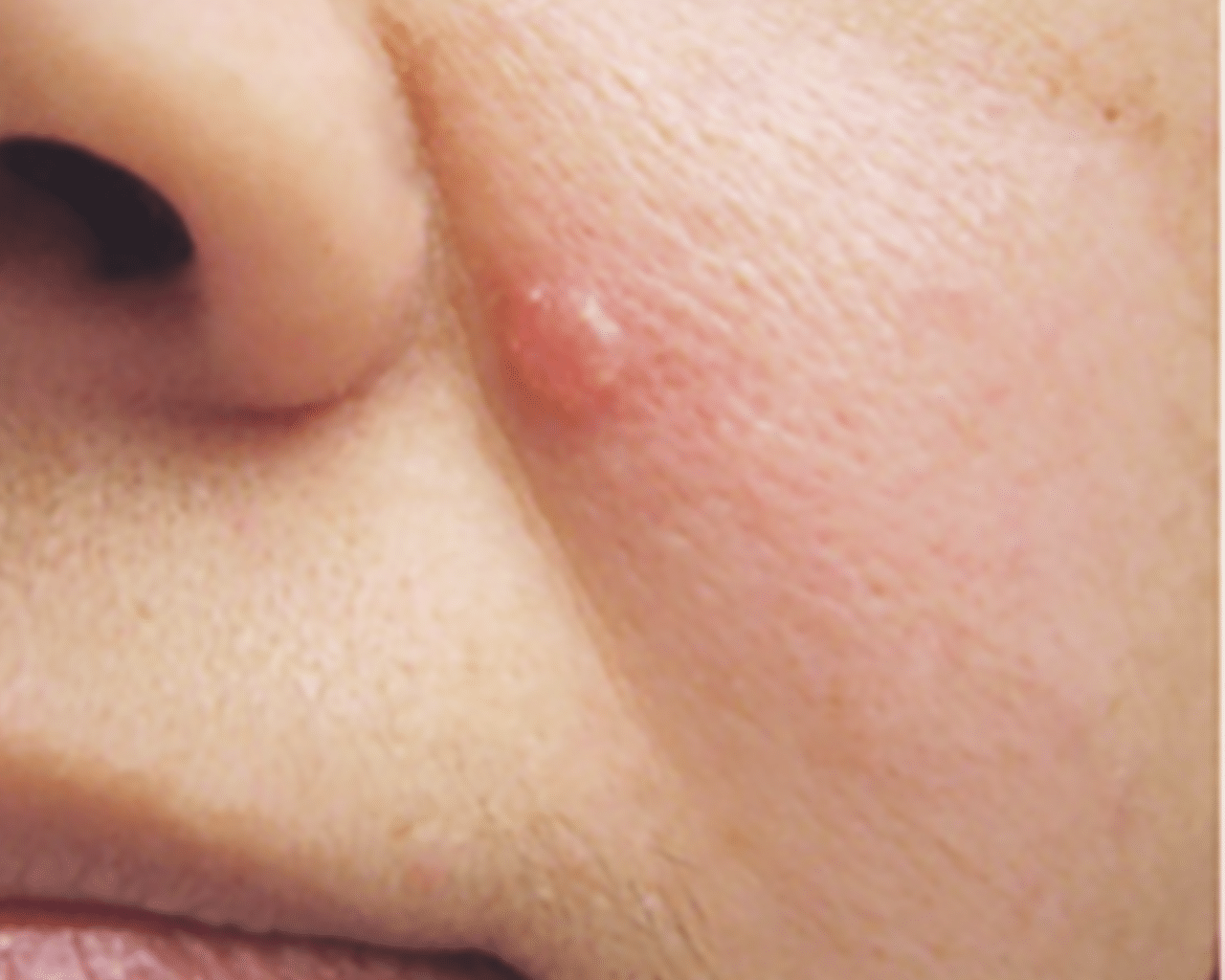
Basal Cell Carcinoma (BCC)
Type
Non-melanoma
Origins
Begins in the bottom of the epidermis (outermost layer of skin).
Frequency
Most common. Accounts for around 75 in 100 skin cancers.
Threat level
Low risk to life. Treatment is still vital to ensure long-term health of your skin.
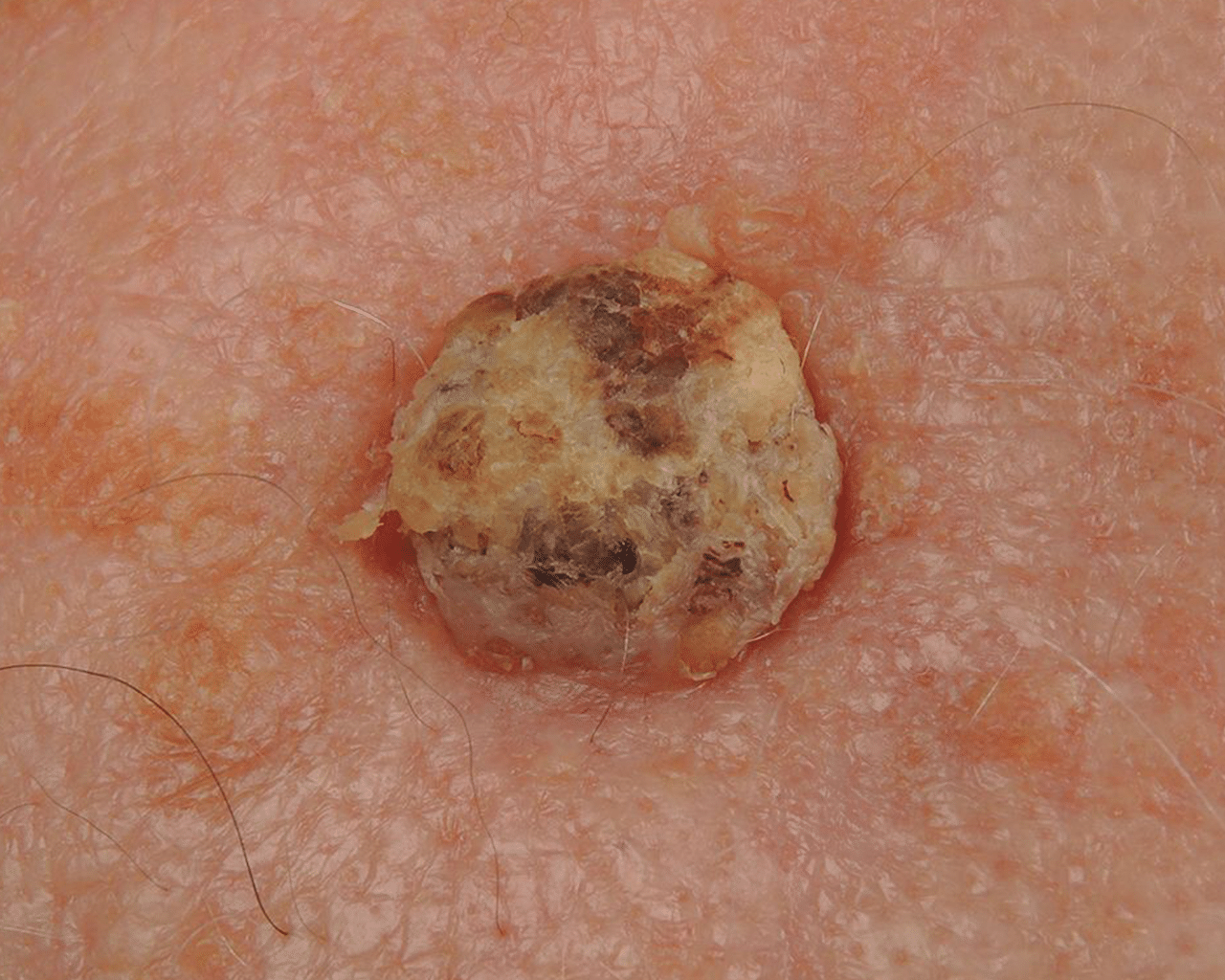
Squamous Cell Carcinoma (SCC)
Type
Non-melanoma
Origins
Begins in the upper layers of the epidermis (outermost layer of skin).
Frequency
Less common – accounts for roughly 20 in every 100 skin cancers.
Threat level
Low, but in rare cases, an SCC can metastasise (spread of cancer cells from the place where they first formed to another part of the body).
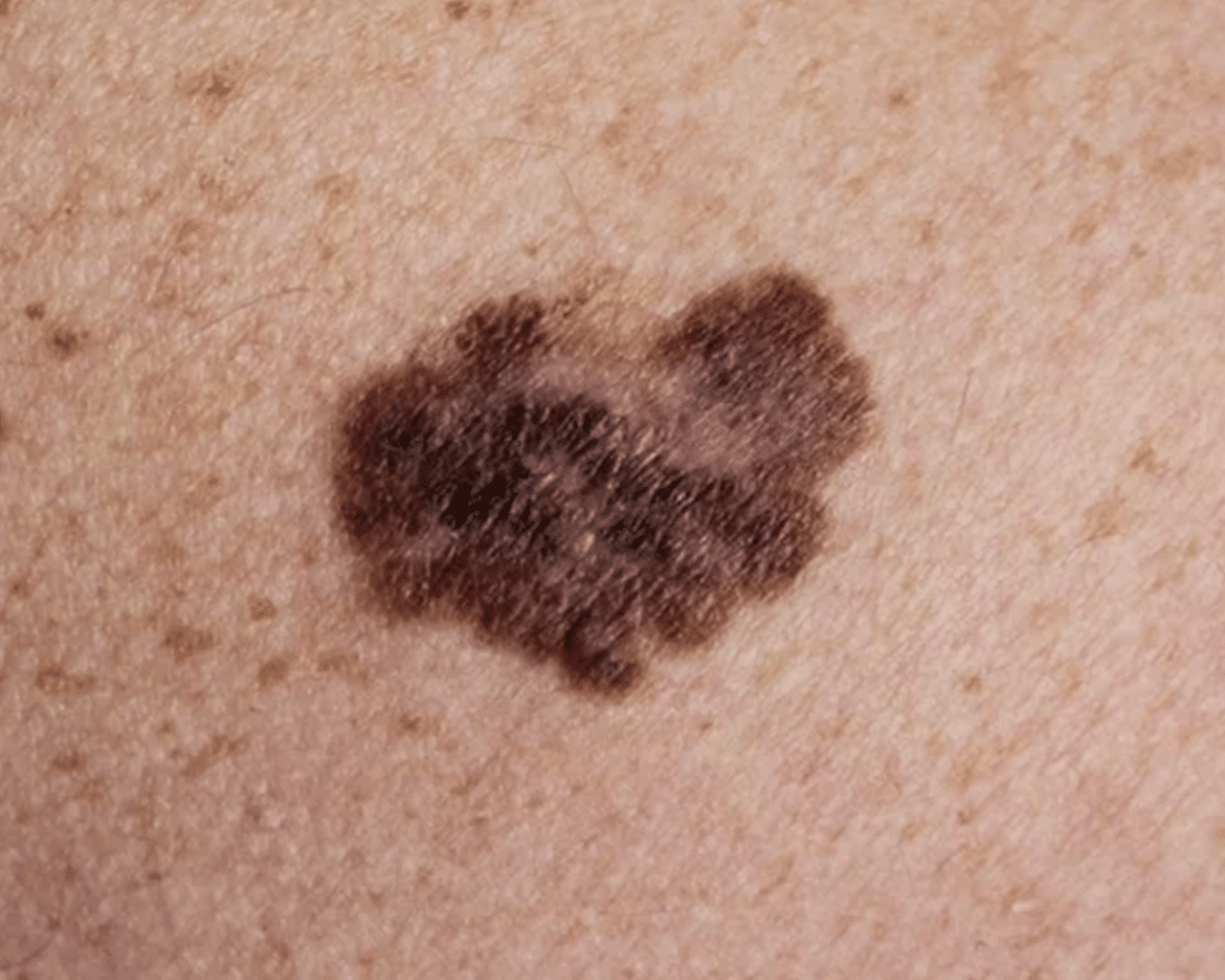
Melanoma
Origins
Begins in the melanocytes (cells responsible for producing melanin/skin pigmentation).
Frequency
Less common but is the most common cause of skin cancer-related deaths.
Threat level
Cancer Research UK found that melanoma skin cancer is the 20th most common cause of cancer death in the UK, accounting for 1% of all cancer deaths (2017-2019). Melanoma has a high risk of metastasising too (spread of cancer cells from the place where they first formed to another part of the body).
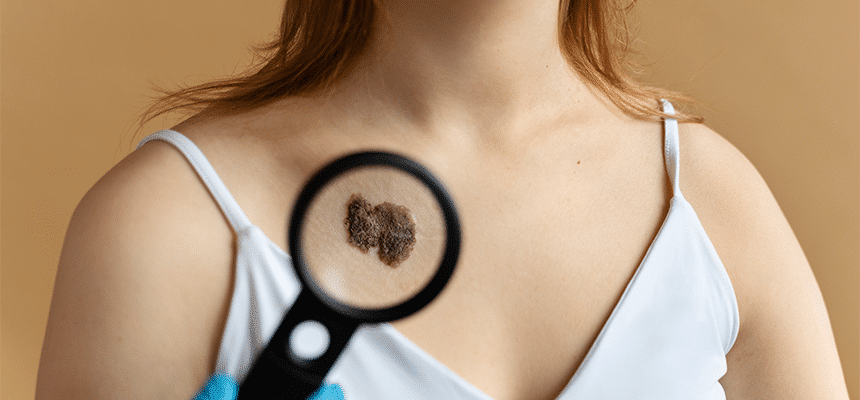
How Melanomas Are Caused
Melanomas are more dangerous than basal or squamous cell carcinomas (BCC/SCC), and if they are left untreated, they can quickly spread to nearby organs.
The melanocytes within the skin are where melanomas typically begin. Melanocytes are the cells that contain and produce melanin – the pigment responsible for hair and skin colour. DNA mutations occur within the melanocytes, and these mutations are typically caused by UV damage. These mutations then cause cancerous cells to grow, leading to melanoma.
Safer Sun Strategies
Helping you to reduce your risk of developing skin cancer.

Wear Sunscreen
Mineral-based sunscreen, such as the CellDerma sunscreen range, is powered by Zinc Oxide and/or Titanium Dioxide for superior UV protection.
Our range includes Tinted Mineral for an even skin tone, Ultralight Mineral for virtually no grey hue, and Pure Mineral for anti-ageing benefits.

Avoid The Sun
Seek shade, when possible, even if you have sunscreen on.

Cover Up!
Wear good, protective clothing to cover your skin. This helps reduce the surface area of skin on show, lessening your risk of skin damage and genetic mutations within the skin cells.

Keep Your Hat On
Wear a hat – this helps to protect your scalp, which rarely sees sunscreen application.
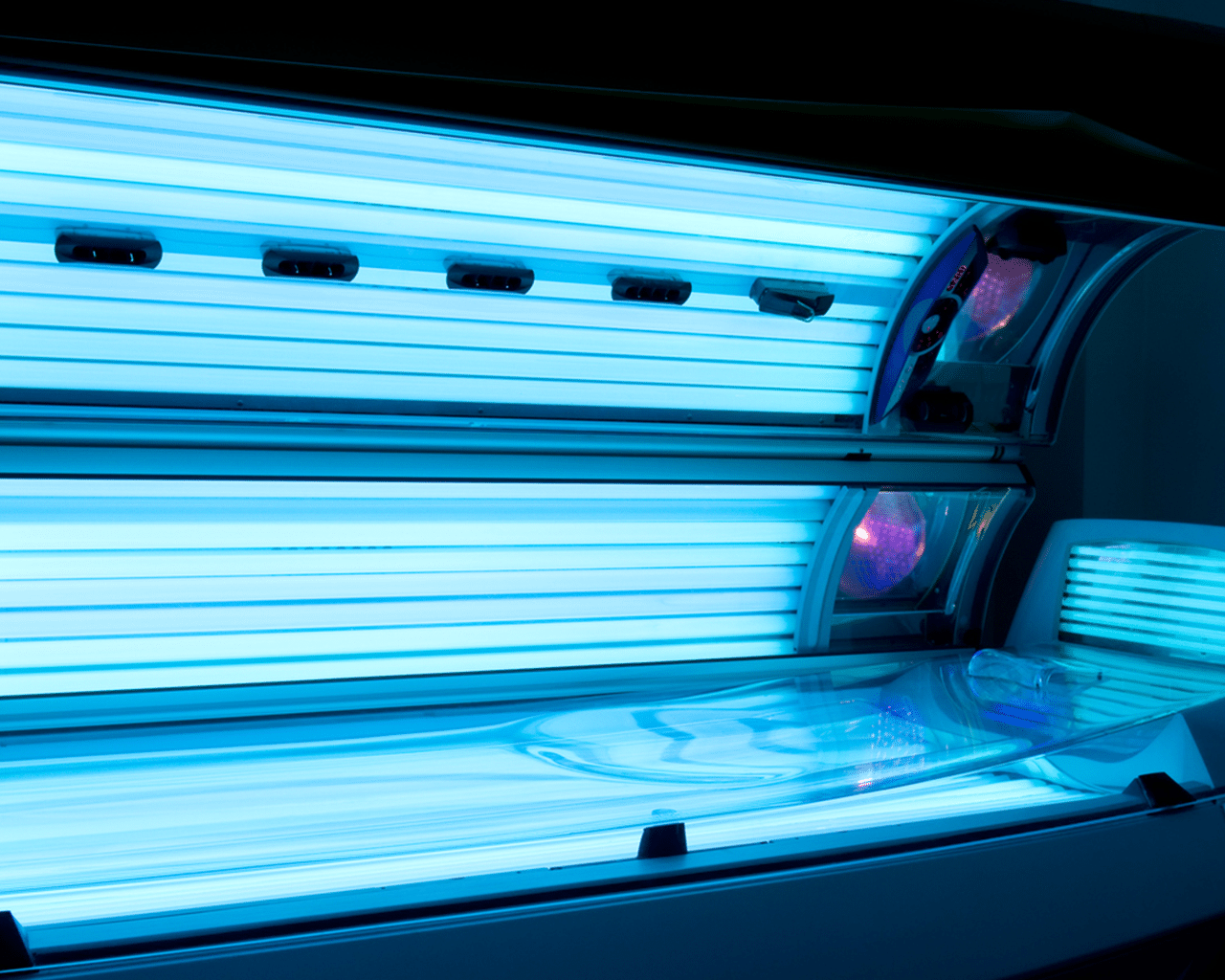
Stay Away From Tanning Beds
Avoid using tanning beds. These artificial sources emit a very high amount of UVA rays that will damage the skin quickly.
Tanning beds are 10-15 times stronger than the midday sun in the Mediterranean Sea. Indoor tanning has a plethora of negative health effects, many of which are involved in cancerous processes.
Tanning beds have been shown to increase the risk of cutaneous malignant melanoma – a skin cancer with poor prognosis when diagnosed at an advanced stage.
Reduce the harm you inflict on your skin. Think of your skin like your other organs – you wouldn’t inhale toxic levels of fumes for your lung health, or consume dangerous levels of poison for your digestive health.

Remember your ABCDEs!
Examine your skin regularly using the ABCDE method.
Implementing Safer Sun Strategies
The sun’s rays are strongest between 11am and 3pm. This is when UVB rays are at their most intense. Did you know, UVA rays are consistent in their intensity all year round?
You should seek shade between these hours and be vigilant with sunscreen application, especially if you have been swimming or sweating.
Current beauty trends imply tanned skin is a sign of health when scientifically, it is the opposite. Tanned skin is damaged skin. Damaged skin is more likely to undergo cell mutations, thus the risk of developing skin cancer is much higher. To give your skin a risk-free bronzed glow, opt for a good quality self-tanner to keep your skin healthy, and make sure to keep out of the sun and follow the steps above.
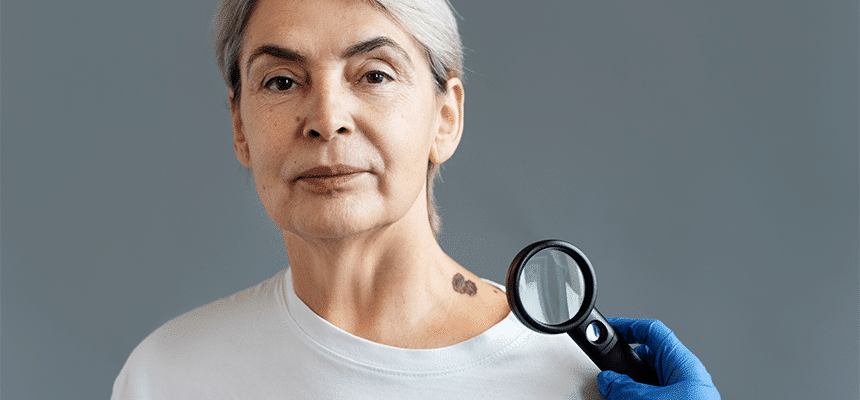
Summary
- Monitor your skin regularly, and use the ABCDE method to track any changes.
- Speak to a medical professional if you have concerns.
- Practice safer sun strategies, like avoiding midday sun, wearing high SPF mineral-based sunscreen, and avoiding tanning beds.

